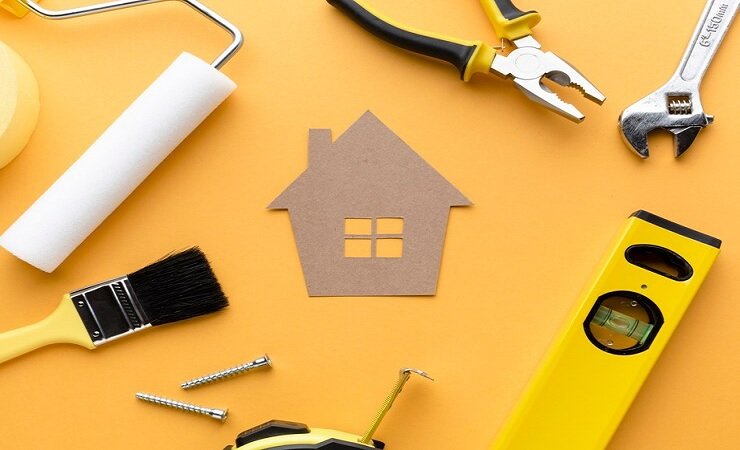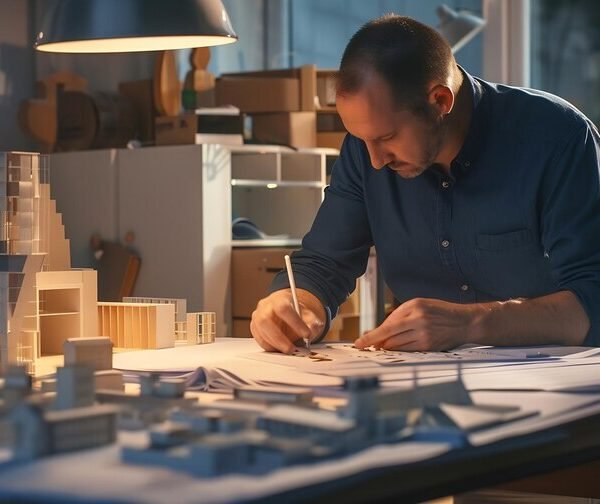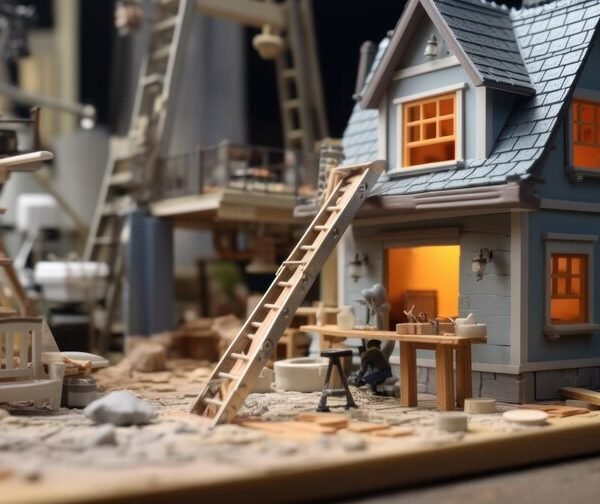Home Improvement Environmental Benefits: What Are They?
Imagine waking up in a cozy, energy-efficient home where every nook and cranny exudes sustainability. You take a refreshing shower under a low-flow showerhead, basking in the natural light streaming through your double-paned windows. As you sip your morning coffee, you feel a sense of pride knowing that your home is not just a sanctuary but also a guardian of the planet.
Embarking on sustainable home improvements can have a profound impact on reducing your environmental footprint. By embracing energy-efficient practices, conserving water, minimizing waste, and prioritizing indoor air quality, you can create an eco-friendly haven that harmonizes with nature while enhancing your comfort and well-being.
Key Takeaways:
- Energy-efficient home improvements, such as insulation, smart appliances, and solar panels, can significantly reduce energy consumption, lower utility bills, and diminish carbon emissions.
- Water-conserving measures like low-flow fixtures, rainwater harvesting systems, and drought-resistant landscaping can help preserve this precious resource and protect local waterways.
- Implementing waste reduction strategies, including recycling, composting, and mindful material choices, can divert waste from landfills and conserve natural resources.
- Improving indoor air quality through proper ventilation, air filtration, and non-toxic materials can promote better health, comfort, and productivity for occupants.
Are you ready to embark on a sustainable journey through your home? Buckle up and let’s dive into the world of eco-friendly home improvements!
Energy Efficiency: Powering Your Life, Preserving the Planet
- Reduced Energy Consumption: By making your home more energy-efficient, you can significantly reduce your energy consumption, which in turn lowers your carbon footprint. Imagine being able to brag about your low utility bills while doing your part to protect the environment!
- Lower Utility Bills: Who doesn’t love saving money? Energy-efficient home improvements can help you save big on those pesky utility bills. It’s like getting a raise without even having to ask your boss!
- Decreased Carbon Emissions: Every kilowatt-hour of energy you save means less carbon dioxide released into the atmosphere. By reducing your energy consumption, you’re actively contributing to the fight against climate change.
- Increased Comfort and Health: A well-insulated, energy-efficient home not only keeps you cozy during those chilly winters but also helps maintain a comfortable indoor temperature year-round. Plus, you’ll breathe easier knowing your home is doing its part to keep the air clean.
Now, let’s dive into some energy-efficient home improvement options that can turn your abode into an eco-friendly powerhouse:
- Insulation and Weatherization: Think of insulation as your home’s cozy sweater, keeping the warm air in during winter and the cool air in during summer. Proper insulation, along with sealing any air leaks, can dramatically reduce your energy consumption and save you money on heating and cooling costs.
- Energy-Efficient Appliances and Lighting: From refrigerators to washing machines, upgrading to Energy Star-certified appliances can make a significant difference in your energy usage. And let’s not forget about swapping out those old incandescent bulbs for energy-efficient LED or CFL lighting – it’s like giving your home a bright, money-saving makeover!
- Solar Panels and Renewable Energy Systems: Why not harness the power of the sun to fuel your home? Installing solar panels or exploring other renewable energy sources can significantly reduce your reliance on fossil fuels and shrink your carbon footprint.
- Smart Home Technologies: Welcome to the future of home energy management! Programmable thermostats, smart lighting systems, and home automation can help you optimize energy usage and reduce waste, all while adding a touch of modern convenience to your eco-friendly abode.
Water Conservation: Protecting Nature’s Lifeline
- Reduced Water Consumption: By conserving water, you’re not only saving money on your water bill but also preserving this precious resource for generations to come. Every drop counts, especially in regions prone to droughts or water scarcity.
- Lower Water Bills: Speaking of saving money, implementing water-conserving measures can lead to significant reductions in your water bills. That extra cash could be the key to funding your next eco-friendly adventure!
- Conservation of Water Resources: Water is essential for sustaining life on our planet, and by reducing your consumption, you’re helping to protect local waterways, ecosystems, and the overall water cycle. It’s like giving Mother Nature a refreshing drink of water!
- Protection of Local Ecosystems: When you conserve water, you’re not just saving it for yourself – you’re also helping to maintain the delicate balance of local ecosystems that rely on healthy water sources. Imagine the gratitude from the fish and wildlife in your area!
Now, let’s dive into some water-conserving home improvement options that can turn your home into a hydration haven:
- Low-Flow Showerheads and Faucets: By installing low-flow fixtures, you can significantly reduce your water consumption without sacrificing water pressure or your showering experience. It’s like having a personal water-saving superhero in your bathroom!
- Dual-Flush Toilets: Say goodbye to water-guzzling commodes and hello to dual-flush toilets. With the option to choose between a full flush or a water-saving flush, you’ll be doing your part to conserve water with every trip to the loo.
- Rainwater Harvesting Systems: Why let all that precious rainwater go to waste? By installing a rainwater harvesting system, you can collect and store rainwater for various purposes, such as watering your garden or even flushing your toilets. It’s like having your own personal water supply, straight from nature’s tap!
- Drought-Resistant Landscaping: Tired of maintaining a thirsty lawn? Consider switching to drought-resistant landscaping, featuring native plants and xeriscaping techniques. Not only will you save water, but you’ll also create a beautiful, low-maintenance outdoor space that’s in harmony with your local environment.
Waste Reduction: Minimizing Your Footprint, One Step at a Time
- Reduced Waste to Landfills: By reducing the amount of waste you generate, you’re helping to minimize the strain on already overflowing landfills. Imagine being able to brag about how little trash your household produces!
- Conservation of Natural Resources: Every time you recycle or reuse an item, you’re conserving the natural resources that would have been used to create a new product. It’s like giving Mother Nature a well-deserved break!
- Lower Waste Management Costs: Reducing waste not only benefits the environment but can also save you money on waste management fees. Who doesn’t love a win-win situation?
- Protection of Local Ecosystems: By minimizing waste and properly disposing of materials, you’re helping to reduce the amount of pollution and contamination that can harm local ecosystems and wildlife. It’s like being a superhero for your neighborhood critters!
Now, let’s explore some waste-reducing home improvement options that can turn your home into a zero-waste wonderland:
- Recycling and Composting: Invest in recycling bins and start a compost pile for your food scraps and yard waste. Not only will you divert waste from landfills, but you’ll also create nutrient-rich soil for your garden or houseplants.
- Reusing and Repurposing Materials: Before tossing out that old piece of furniture or household item, consider giving it a new life through upcycling or repurposing. Get creative and turn trash into treasure!
- Minimizing Packaging and Single-Use Plastics: Opt for products with minimal packaging, and say no to single-use plastics whenever possible. Bring your own reusable bags, water bottles, and containers to reduce waste and plastic pollution.
- Implementing a “Reduce, Reuse, Recycle” Mindset: Cultivate a mindset of conscious consumption by reducing your overall waste, reusing items as much as possible, and recycling what you can’t reuse. It’s like having a personal waste-reduction mantra that’ll guide you towards a more sustainable lifestyle.
Indoor Air Quality: Breathing Easy in Your Eco-Friendly Sanctuary
- Better Health and Well-Being: By improving indoor air quality, you’re not only creating a healthier living environment but also promoting overall well-being for yourself and your loved ones. Breathe easy, knowing your home is a haven of fresh, clean air.
- Reduced Exposure to Pollutants and Allergens: From volatile organic compounds (VOCs) to mold and dust mites, indoor air can harbor a variety of pollutants and allergens. By taking steps to improve your home’s air quality, you’re protecting yourself and your family from these harmful contaminants, creating a safer and more comfortable living space.
- Improved Comfort and Productivity: Poor indoor air quality can lead to headaches, fatigue, and decreased concentration. By ensuring proper ventilation and air filtration, you’re not only enhancing your health but also boosting your comfort and productivity levels. Who knew fresh air could be such a game-changer?
- Protection of Occupants and Visitors: Whether you have young children, elderly relatives, or friends with respiratory issues, improving your home’s air quality is a simple yet effective way to create a safe and welcoming environment for all.
Now, let’s explore some indoor air quality improvement options that can turn your home into a breath of fresh air:
- Proper Ventilation and Air Filtration: Invest in high-quality air filters and ensure proper ventilation throughout your home. Consider installing a whole-house air purification system or strategically placing air purifiers in high-traffic areas for maximum effectiveness.
- Non-Toxic and Low-VOC Paints and Materials: When renovating or redecorating, choose paints, finishes, and building materials that are low in volatile organic compounds (VOCs) and other harmful chemicals. Your lungs (and the planet) will thank you!
- Natural Light and Air Circulation: Embrace the power of natural light and fresh air by opening windows and using sheer curtains or blinds. Not only will this improve air circulation, but it’ll also create a bright and airy atmosphere that’s good for your mental and physical well-being.
- Regular Cleaning and Maintenance: Dust, pet dander, and mold can accumulate over time, compromising your indoor air quality. Establish a routine for deep cleaning, vacuuming, and maintaining your HVAC system to keep your home’s air fresh and pure.
Conclusion
As you can see, embarking on sustainable home improvements is a powerful way to reduce your environmental impact while creating a healthier, more comfortable living space. By prioritizing energy efficiency, water conservation, waste reduction, and indoor air quality, you’re not only doing your part for the planet but also investing in your own well-being and long-term savings.
So, what are you waiting for? Whether you’re tackling a full-scale renovation or simply making small, eco-friendly upgrades, every step counts. Embrace the sustainable living revolution and let your home be a shining example of how we can harmonize modern living with environmental stewardship.
Remember, creating an eco-friendly oasis isn’t just about saving the planet – it’s about crafting a sanctuary where you, your loved ones, and Mother Nature can thrive together. So, roll up your sleeves, grab your green thumbs, and get ready to transform your home into a sustainable haven that future generations will thank you for.











